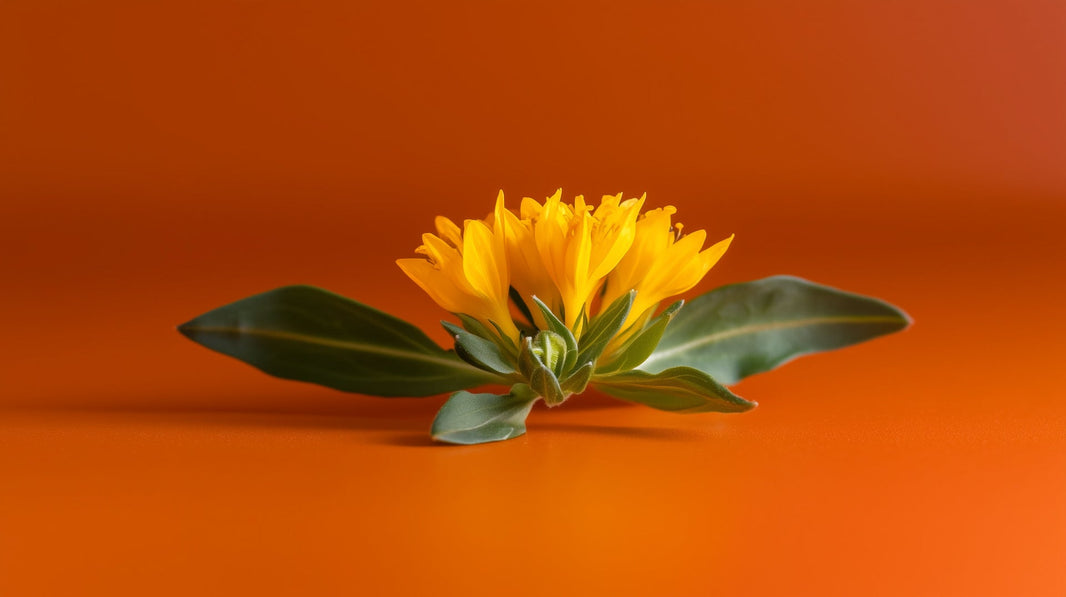If you've been living in a wellness cave and haven't heard of Rhodiola Rosea, it’s time to come out and meet the herb that’s taking the health world by storm. This little gem, with its robust reputation in traditional medicine, has been helping people fight stress, boost energy, and stay sharp for centuries. But what makes it tick? Let’s break it down, and we’ll make it fun.
What is Rhodiola Rosea?
First off, Rhodiola Rosea isn’t just another trendy herb. It’s an adaptogen that grows in cold, mountainous regions of Europe and Asia. This hardy little plant has been used for centuries, especially in Russia and Scandinavia, to combat fatigue, improve physical endurance, and reduce stress. While it has ancient roots, modern science is finally catching up with what traditional healers knew all along: Rhodiola is the real deal when it comes to managing stress and enhancing well-being.
How Does Rhodiola Work?
Here’s where it gets interesting. Rhodiola works by modulating the body’s stress response through the hypothalamic-pituitary-adrenal (HPA) axis. In simple terms, when you get stressed, your body produces cortisol—the “fight or flight” hormone. Rhodiola helps your body manage and balance cortisol production, preventing it from spiraling out of control during stressful situations. This means less burnout, better mood, and a clearer mind.
But there’s more. Rhodiola also enhances the brain's ability to use serotonin, dopamine, and norepinephrine, neurotransmitters that affect mood, focus, and energy. Basically, it makes you feel good, stay focused, and keep going when life gets tough. Rhodiola’s active compounds, namely rosavins and salidrosides, are the powerhouse agents that make it work. They help improve mental performance and provide energy without the jitters or crashes.
The Compounds Behind Rhodiola's Power
Now let’s talk chemistry — because behind every great herb, there’s a science to back it up.
-
Rosavins: These are unique to Rhodiola and are believed to help reduce stress, fatigue, and improve overall mood. They also help modulate cortisol levels and boost mental clarity.
-
Salidrosides: These are the heavy hitters when it comes to improving endurance and cognitive performance. They enhance your ability to focus and help combat fatigue by optimizing the function of mitochondria (your energy-producing cells).
Together, these compounds work in perfect harmony to enhance both physical and mental performance, making Rhodiola an all-around stress-fighting powerhouse.
How to Use Rhodiola Rosea: The Practical Guide

Okay, so you’re sold on Rhodiola’s magic. Now, how do you incorporate it into your routine?
1. Capsules or Tablets
The most common form of Rhodiola is as a capsule or tablet. This is a super convenient way to get a consistent dose without having to think too much about it. The typical dose is 200-400 mg per day. Start with a smaller dose and work your way up, depending on how your body reacts.
2. Rhodiola Powder
For the adventurous among you, Rhodiola powder is another option. You can easily stir this powder into smoothies, teas, or even your morning oats. A 500 mg dose is often recommended. If you’re looking to kickstart your day with an extra energy boost, mix it into your pre-workout drink. Just remember, powders can have a bit of an earthy taste — so don’t go overboard.
3. Rhodiola Tea
If you’re the kind of person who likes a nice, warm cup of something to get the day going, Rhodiola tea is a great option. Steep Rhodiola root powder in hot water for a few minutes, and you’ve got yourself a natural energy boost without the crash. It’s mild, but expect an earthy, almost slightly bitter flavor — kind of like a herbal tea with a kick. Add a little honey or ginger if you want to tone down the bitterness.
Taste of Rhodiola: What to Expect
Let’s be real — Rhodiola is not a taste sensation. It has a bitter, slightly earthy flavor that can be a little off-putting if you’re not prepared for it. When it comes to powders and teas, it can taste a bit like dirt (no, seriously), but don’t let that scare you off. A quick sweetener like honey or ginger can mask the flavor, making it a bit more palatable. Capsules and tablets, of course, bypass the taste entirely, which is why they’re the go-to for most people.
When to Take Rhodiola: Timing Is Everything
Here’s a golden rule: don’t take Rhodiola late in the day. Rhodiola is great for boosting energy and reducing fatigue, so you want to take it in the morning or early afternoon, when you need the most energy. Taking it too late might keep you from getting the sleep you need — and we all know that lack of sleep leads to more stress.
Is Rhodiola Right for You?
Most people tolerate Rhodiola well, but it’s not for everyone. If you have any pre-existing conditions (especially related to blood pressure or heart issues) or are on medication, it’s always best to check with your healthcare provider before adding it to your routine.
As with any supplement, don’t expect instant results. Adaptogens like Rhodiola work best over time, helping your body handle stress more effectively and improving your energy levels gradually.
Final Thoughts: Rhodiola Rosea — Your Go-To Stress and Energy Ally
Rhodiola Rosea is the kind of herb that quietly works in the background, helping you tackle stress, fatigue, and mental fog without drawing attention to itself. It's not a quick fix, but rather a long-term ally that helps you stay sharp, energized, and calm in the face of life’s daily chaos.
If you’re dealing with chronic stress, looking to boost your mental performance, or just need an energy boost without the jitters, Rhodiola Rosea could be your best friend. It’s not a miracle, but it’s pretty close.







